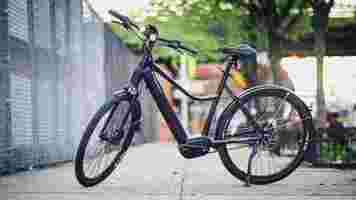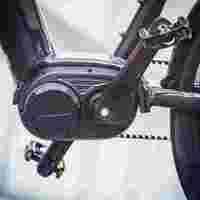Why Nissan is probably Tesla’s biggest threat — after Elon’s ego
Nissan recently announced a new £13 billion investment to help transition its business to being focused around electric vehicles (EVs). The investment is centred around its Sunderland plant in the north east of England, which already makes the popular Nissan Leaf, and a plan to build 23 new electric models by 2030.

But Nissan, like most traditional automakers, has a long way to go if it wants to catch Tesla. Elon Musk’s company is easily the biggest seller of EVs in the world, with the Model 3 and Model Y shifting around 230,000 vehicles per quarter between them worldwide. China’s SAIC is in second place thanks to its Wuling Hingguang Mini, which is the best selling EV in China. After that come Volkswagen, BYD and Hyundai.
So why are many of the traditional players that have built their businesses on internal combustion engines so far behind Musk, and can Nissan buck the trend?
Why some have struggled
Tesla created the first serial production EV with lithium-ion batteries in 2008 with the launch of the Roadster sports car. It has gone on to evolve a suite of vehicles whose range, performance and efficiency are arguably the best in the business – as reflected by the company’s impressive growth and profitability.
It makes sense that if you have been making EVs for the last decade, you’re probably more successful at making them now. You will have vastly more data in terms of how drivers use your vehicles, what goes wrong with them, and how to best manage suppliers of motors and batteries.
Nissan has certainly served its time, having debuted the Leaf in 2011, which is one of the best selling EVs of all time, having sold half a million units over a decade. But if there has been a lesson in this sector, it’s that being successful at making vehicles with internal combustion engines does not guarantee success at making EVs.
An example is General Motors (GM). GM was there all the way back in the late 1990s with its ground-breaking EV1. These little cars, loved by their owners, showed how an all-electric future could look. But GM went on to crush the EV1s en-masse, saying they were insufficiently popular, though conspiracy theorists have questioned whether it was ever serious about taking them to mass market. In the process, EV1s became the star of their own documentary .
GM tried again to crack EVs with its Volt in 2010, which was also popular until being killed in 2018 (the demise was blamed on an ageing production facility). It also launched the Bolt in 2017, which was designed to be a relatively cheap, long range EV. But while it achieves this, it has been plagued with battery issues. The knowledge that Bolt packs can catch fire has become so pervasive that car parks in the US have reportedly been banning them from entering.
GM says it now has a solution, and has recalled tens of thousands of Bolts to have their battery packs replaced. But as a result, production of new Bolts is currently suspended until late January. GM also promises some 20 new EV models by 2023, but recently came in for criticism after displaying no EVs at the 2021 LA Auto Show (whose theme was electrification). Given that President Biden recently credited GM with leading the industry in EV manufacture, this surely raises eyebrows.
Toyota was also a key player in moving the industry to greener vehicles with its hybrid cars of the late 1990s, but is now also playing catch up. It has only just, in December 2021, released its first volume production EV, the bZ , after going much further than others with developing hydrogen-powered vehicles. Toyota’s hydrogen-powered Mirai failed to gain market share in the way that EVs with batteries have, selling just 316 in Europe in the first half of 2021. Toyota is reportedly also teaming up with China’s BYD to launch a US$30,000 EV in 2022.
Meanwhile, Volkswagen is the legacy automaker seen as most likely to catch up with Tesla’s EV production rate – potentially by 2024 . The German giant is spending some €35 billion (£29 billion) on the sector. But Volkswagen acknowledges that it takes them three times as long as Tesla to make its flagship EVs, making the gap in capabilities painfully apparent. It aims to narrow the gap to double in 2022.
Nissan’s advantage
If we have learnt anything from Tesla and also Chinese EV entrants such as NIO, BYD and XPeng, it’s that bespoke electric chassis make better electric cars. For example, Tesla’s Model 3 rival, the Polestar 2, was originally meant to be a petrol Volvo S40 , but adapting an internal combustion engine vehicle to be electric just doesn’t work as well. You end up with cars with less range on the battery and often less space inside.
Fortunately for Nissan and its alliance partner Renault, they already have such a bespoke EV platform. Known as CMF-EV , it allows the group to share a number of components across different EVs and maximise the efficiency of manufacturing them.
From observing Tesla, the second vital factor to producing EVs at scale (and profitably) is to make your battery packs as close to the final assembly factory as possible, reducing transport cost and time. Again, Nissan ticks this box. Its Sunderland plant, which not only produces the Leaf but will also produce its successor, is situated very close to the Envision battery “gigafactory” that supplies it. Chinese-owned Envision plans to produce 38GWh of batteries a year – enough to power 500,000 new cars, which would put Nissan on par with Tesla’s factories in the US and China.
So with its years of EV knowledge, efficient battery supply chains and bespoke EV platform, Nissan could very well be the legacy automaker that ends up being able to compete with the new kids on the block. But if it fails to capitalise on its advantages to reinvent itself as an EV-first company, we have seen from numerous other companies that being an early runner is certainly not enough on its own.
This article by Tom Stacey , Senior Lecturer in Operations and Supply Chain Management, Anglia Ruskin University , is republished from The Conversation under a Creative Commons license. Read the original article .
Review: The Priority Current ebike is my new benchmark for smoothness and power
The more I test ebikes, the more I realize how much it matters to me that the ride a normal bike. Not because I’m an avid cyclist — I hadn’t ridden a normal bike in years before I started testing ebikes — but because a smooth, responsive ride is just more engaging.

Unfortunately, some of my favorite bikes in this regard also tend to be weaker on power delivery. I usually don’t mind a motor with less power, but sometimes I do miss the extra oomph.
The Priority Current is one of the few ebikes that can deliver on both fronts. Priority has built up a reputation for minimizing maintenance on its ‘acoustic’ bikes, and the Current follows that trend with a series of sensible design choices. It’s one of the most well-rounded, natural-feeling ebikes I’ve tested that also has oodles of power, and it goes a long way to justify its $3,299 price tag.
Yes, that’s a bit on the pricier side, but more than reasonable against comparably spec’d 28mph ebikes — although the price is a bit harder to swallow when I remember the bike launched at $2,699. Still, here’s what you’re getting for that price:
A 500-watt mid-drive motor rated at a massive 140 NM of torque
Torque-sensing pedal assist (5 levels)
28mph max speed (Class 3) though it ships limited to 20mph
Gates carbon belt drive
Removable 500 Wh battery rated for 30-60 miles of range
Hydraulic disk brakes
E-bike-specific Shimano Nexus 5 internal gear hub
An adjustable stem
A large LCD display with USB port for charging devices
Nice fenders
integrated bright headlight and tail lights
A mid-step frame in three sizes
Cushy 650B tires
54 Lb weight
Those are solid specs, and though I’m sure there’ll be comments on how *insert ebike here* has more watts and a bigger battery, it’s simply rare to find a Gates belt drive with a 28mph mid-drive motor under $3,500. In any case, reviewing so many ebikes has made it clear basic specs rarely tell the full story. You can’t know how a motor’s power curve is tuned from a spec sheet for example, nor how effective a bike’s pedal assist sensor is. Meanwhile a bike’s geometry, gearing, and component choices all factor into the ride in often unpredictable ways.
Taking all this into account, there’s one word that comes to mind above all when riding the Priority Current:
Smooth. Oh so smooth .
The Current is ebike equivalent of silk pajamas — if those pajamas gave you Hulk legs. Unlike the majority of ebikes I’ve tested, there is virtually no jerkiness to the ride and almost no delay between moving the pedal and the assist kicking in. Whether you’re in assist level one or five, the torque sensor, mid-drive, and acceleration curve make for a super-natural ride. You know the motor is putting in the work because you can fly up inclines while the motor makes a light hum, but it is among the subtlest pedal assist systems I’ve ridden, at least among those with this much torque.
I love it. I had some initial reservations about the ride quality of the motor, which isn’t one from one of the ‘fancy’ mid-drive companies like Bosch, Shimano, Yamaha, or Brose (it is Priority branded and tuned by the company, but appears to be some variant of the Wuxi Truckrun motor). Any worries disappeared after riding it; the Current’s motor is as smooth as any that I have tested — especially for one which puts out so much torque and reaches 28 mph. Bikes from the ‘big 4’ can be very fast and powerful too, but you’ll usually have to pay more once you get into 28 mph class.
Granted, this kind of tuning isn’t for everyone. Some people like having an ebike that launches like a rocket, and this probably isn’t the best bike if you don’t want to actively use the gears. If you’re starting on a hill from a dead stop, for example, the bike won’t just catapult you to the top in gear 5. Priority actually provides an alternative firmware that provides a bit more torque from a stop for those who live in hillier regions — and I do prefer it to the default tuning slightly — but even then, the acceleration curve is smoother than most.


At first, this approach made me somewhat question the claimed 140 NM of torque — a huge figure that’s hard to truly verify — but it’s clear the bike’s motor is simply tuned differently from most ebikes. Rather than putting all the power into initial acceleration, I really felt the motor’s power once I got up to speed — past 10 mph or so. As a heavier rider, most 28mph ebikes struggle to actually allow me to reach that speed without me running out of breath, while the Current manages to get me there at a comfortable effort level. The Current made cruising alongside traffic a cinch, even when stuffing a trailer-full of groceries.
The choices made for the mechanical components contribute to the smooth vibe too. Chief among these is the Gates Carbon Drive — a super strong belt reinforced with carbon fiber that replaces the usual metal chain. Its primary claim to fame is increased durability over a chain, able to survive thousands of miles without a hitch, but it also means no grease on your pants and an extremely quiet and smooth ride. I never realized how much I appreciated a quiet drivetrain until I took the Current on some trips outside the city — being at one with nature and all that.
I also like the use of internal gears (a necessity on the Gates system anyway), which add to the maintenance-free and quiet experience. While the Shimano Nexus 5 isn’t quite as fancy as the stepless Enviolo hub the bike was originally available with, the gear range covers almost every situation you’ll need — especially with a motor in tow.
I’m a big fan of the choice 650B tires; these are a similar overall diameter to normal (700c) road bike tires, but go on smaller wheels, meaning you get a lot more air volume without quite being a ‘fat’ tire. It allows you to run the tires at lower pressures, which in my experience smooth out the road more than the cheap suspension forks you’ll find on most entry-level ebikes while minimizing unnecessary weight.
The bike delivers on the range front too. Priority claims you’ll get 30-60 miles, and in my experience, that seems realistic. My review unit actually came with a faulty charger that could only charge the bike to about 80%. Nonetheless, was able to ride the bike 35 miles mostly on assist level 2 with another 20% to spare. My normal exercise route is about 17 miles long and since getting a fully functional charger, I’ve been able to make that trip without going below 50% battery.
Assuming you’re a lighter rider, reaching over 50 miles on the lower assist levels seems totally doable, although of course riding on the highest assist levels or in hillier places than NYC will cut range significantly.
It’s also worth noting the bike is very much rideable without assistance, as I was happy to see during my more exercise-oriented rides. The mid-drive motor has no noticeable drag, and on one flat stretch of road, I was comfortably pedaling along at 18-ish mph without realizing I’d accidentally turned off the bike’s assistance (which again goes to show how smooth the bike’s assistance is as well). And because I don’t know where else to put this in the review, the hydraulic disk brakes work provide reassuring stopping ability too.
Bike aesthetics are subjective, but I dig the Current’s looks. The downtube is too thick to be what I’d truly consider a ‘stealth’ ebike, but the integrated battery means it doesn’t scream ebike either. The welds are smooth, the gloss finish is gorgeous, and unlike so many ebikes with generic frames, the Current looks quite different from other bikes on the market. The Current feels every bit like a premium ebike from some of the bigger name companies.
This specific bike aside, I also feel the need to highlight the fact the Priority seems to treat its customers right. As a reviewer who inevitably gets some special treatment, it can be hard to gauge what the after-sales experience is like for the typical buyer, especially for companies like Priority that mainly deals in online sales (they do have a physical location in Manhattan, where I picked up my review unit).
To help deal with my rose-colored reviewer lenses, I always join forums and Facebook groups for each brand’s customers to follow the discussion around the company’s bikes. I can’t guarantee your experience will be positive, but let’s just say Priority fares far better than many of the internet direct companies I’ve researched. The Current is also backed by a 5-year warranty on the frame and 2-year warranty on all components, which again, is better than what you’re usually getting with the cheaper direct sales companies. Indeed, the bike feels like it’s really built to last.
All this being said, I do have a few criticisms.
The WTB Horizon tires are super-comfortable, but given Priority’s emphasis on minimizing maintenance, I’d have liked to see something with a more proven puncture protection layer. Schwalbe’s Big Ben Plus comes to mind, and WTB even sells a version of the Horizon with an additional anti-puncture layer.
Granted, I didn’t get a puncture in the few hundred miles I rode the bike before this review, and Priority says it’s had success sourcing these tires with minimal punctures, but I’d personally prefer the added peace of mind.
Being a little more nitpicky:
Priority sells a rear rack for $35, but it’s pretty rare to not have one included on a city-oriented ebike.
I wish the bike frame had mounts for a front basket or rack. Priority sells these too, but front cargo is much more stable when supported by the frame rather than your handlebars or fork, which are constantly turning.
I’m picky about my bike lights, and the one on the Current is brighter than most, but I’d prefer something with a more directional beam pattern that cuts off at the top so as to not blind oncoming cyclists (I’ve been spoiled by using STVZO lights ).
I don’t care about having a throttle, but it’s worth noting this bike does not have one.
Some kind of a bell would’ve been nice.
But these criticisms do little to mar the experience of riding the Current. It is simply a fantastic execution of an ebike, one that I’m comfortable recommending for both the impeccable performance and the customer-friendly company behind it.
It’s not an ebike for those who want to coast along with a throttle or who prefer beastly acceleration to a natural ride feel. But for those who’ve been looking for an ebike that balances a buttery-smooth pedaling experience with ample power, the Priority Current may just be my new benchmark.
Want public transit to thrive? Make it easier to pay for and use
This article was written by Francois Mottet, Head of Product Strategy at Flowbird on The Urban Mobility Daily , the content site of the Urban Mobility Company, a Paris-based company which is moving the business of mobility forward through physical and virtual events and services. Join their community of 10K+ global mobility professionals by signing up for the Urban Mobility Weekly newsletter . Read the original article here and follow them on Linkedin and Twitter .

The Business of Mobility is an Urban Mobility Company series highlighting some of the most successful new businesses in the mobility sector. Featuring a closer look at the way in which companies stand out, CEOs, Directors and other c-level executives elaborate on what it takes to turn a great idea into a great company.
In 2018 two leaders in parking and ticketing (Parkeon and Cale) joined forces to form Flowbird. Headquartered in Paris, Flowbird serves some 5,000 cities in 70 countries with IoT solutions for smart urban mobility and parking. In this article, Francois Mottet explains how Flowbird is creating a pathway to mobility as a service (MaaS) with its open payment innovations.
Open payment is part of a revolution in financial services that falls under the general term “open banking,” which allows third parties to access data from consumer banking transactions to deliver innovative new services. Thanks to open payments, companies like transport operators can manage and monitor payments without needing to build their own payment and ticketing systems from the ground up.
Consider that in 2010, as this First Data White Paper attests, Transport for London was spending £100 million annually to administer its payment card system. Public transport operators need not spend this type of money layering a payment system on-top of existing global payment networks, which companies like MasterCard, Visa, and Carte Bancaire (CB) have already created. What’s more, an open payment system is hugely convenient.
Travelers simply need to tap their contactless bank card, or contactless smartphone payment app, and then present that same card when they board the bus or the train. The entire payment and ticketing transaction is managed via an open payment system.
To make things simple for the commuter, such a system requires that we build an API (application programming interface) that interfaces with the payment network processor (e.g. MasterCard or Visa) to deliver all the relevant information to the transport operator. CloudFare is our white label cloud-hosted mobility management system, which includes Software-as-a-Service (SaaS) and ticketing as a service.
With CloudFare we can manage discounts for multiple journeys and apply fare capping rules on behalf of the operator. Customers needn’t buy a pass to reduce their transport costs; the system works out their usage and guarantees the best fare. And, through our own Payment Acceptance System connected to a financial service institution, we guarantee operators a secure revenue settlement process. CloudFare makes things that much simpler for users and for transport operators, making it possible to use your bank card as a bus pass, as this case study from Laval, Canada explains.
As Flowbird CEO Bertrand Barthelemy described ‘cross-modality’ in a 2019 interview , “Transport services that are separately managed are seamlessly linked so that they function as one for the end user.” ‘Cross-modality’ is another word for mobility-as-a-service (MaaS), something many cities across the world are striving for. Open payments and other ‘open banking’ innovations will help us realize the MaaS dream as companies like ours set up APIs that use data from mobility providers to facilitate mobility services.
Flowbird is currently able to deliver contactless card ticketing and payment systems to public transport operators across the world, either by integrating with their legacy systems or creating a brand new one. But for now – given the strict procedures of MasterCard and Visa – we have not yet delivered open payment solutions for smaller mobility operators. Our current park-and-ride projects have proved that we can have cross-modal integration on an open payment system, and it’s only a matter of time before we put multiple players (big and small) on one system to lay the payment and ticketing foundations of a seamless MaaS offering.
I started off at Parkeon some fifteen years back, and it’s been an exciting trip seeing how fast things have changed in our industry. Going from a core business that delivered parking payment ticketing solutions to helping build an entirely new industry – MaaS – is hugely exciting. We now have the technology for cities to improve transport services for citizens while reducing pollution and congestion.
It’s great being on the cutting edge of change and being recognized for it, as we were recently when Flowbird won an Innovation Award for its open payment expertise . However, the real joy is in seeing how we can facilitate the move away from single-car ownership to shared mobility platforms, something which open payment is revolutionizing.
Do EVs excite your electrons? Do ebikes get your wheels spinning? Do self-driving cars get you all charged up?
Then you need the weekly SHIFT newsletter in your life. Click here to sign up .